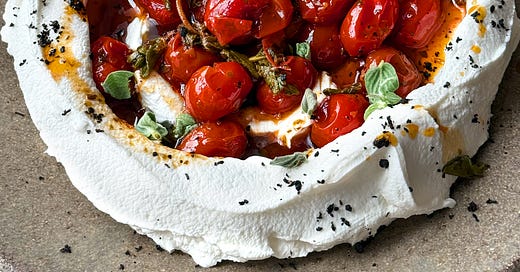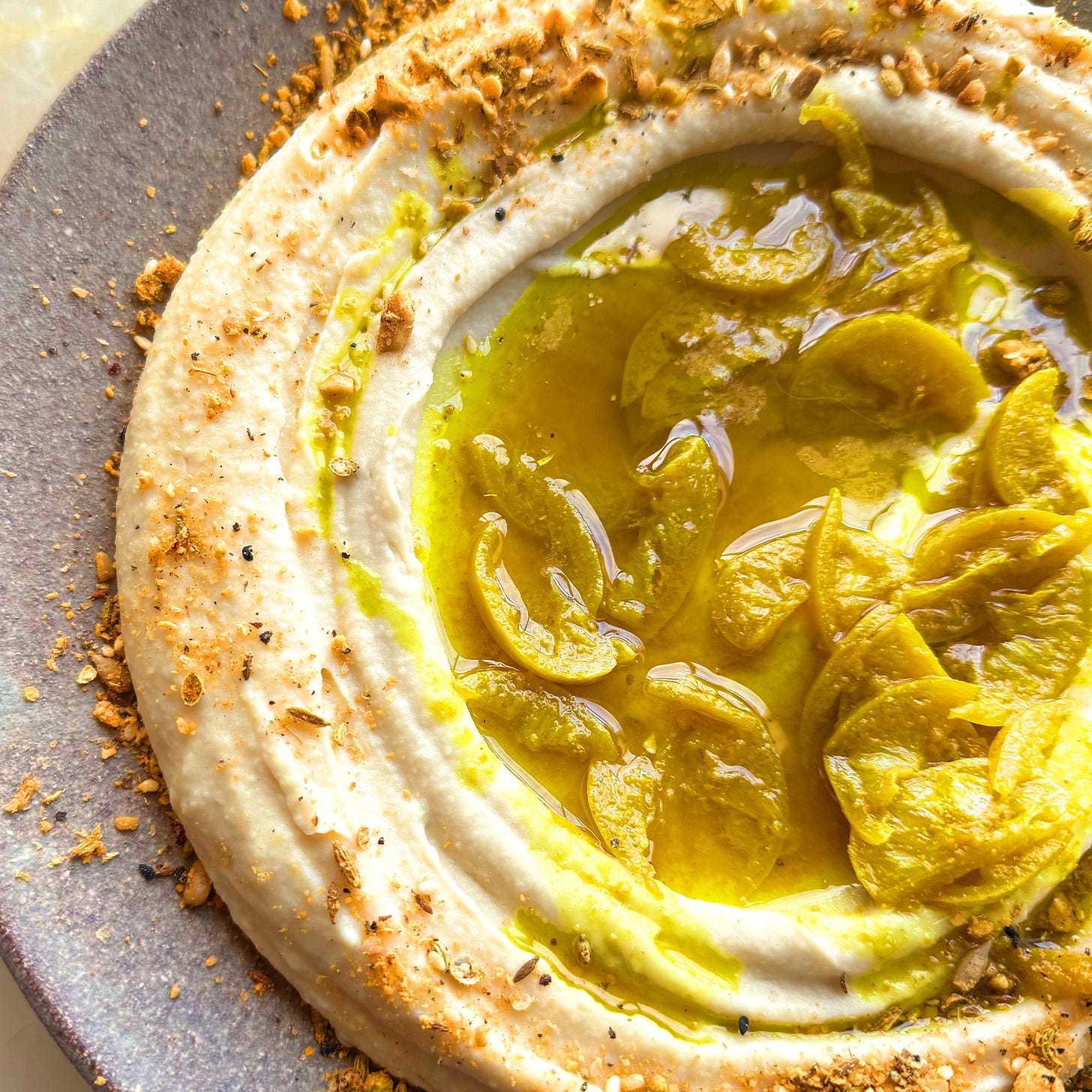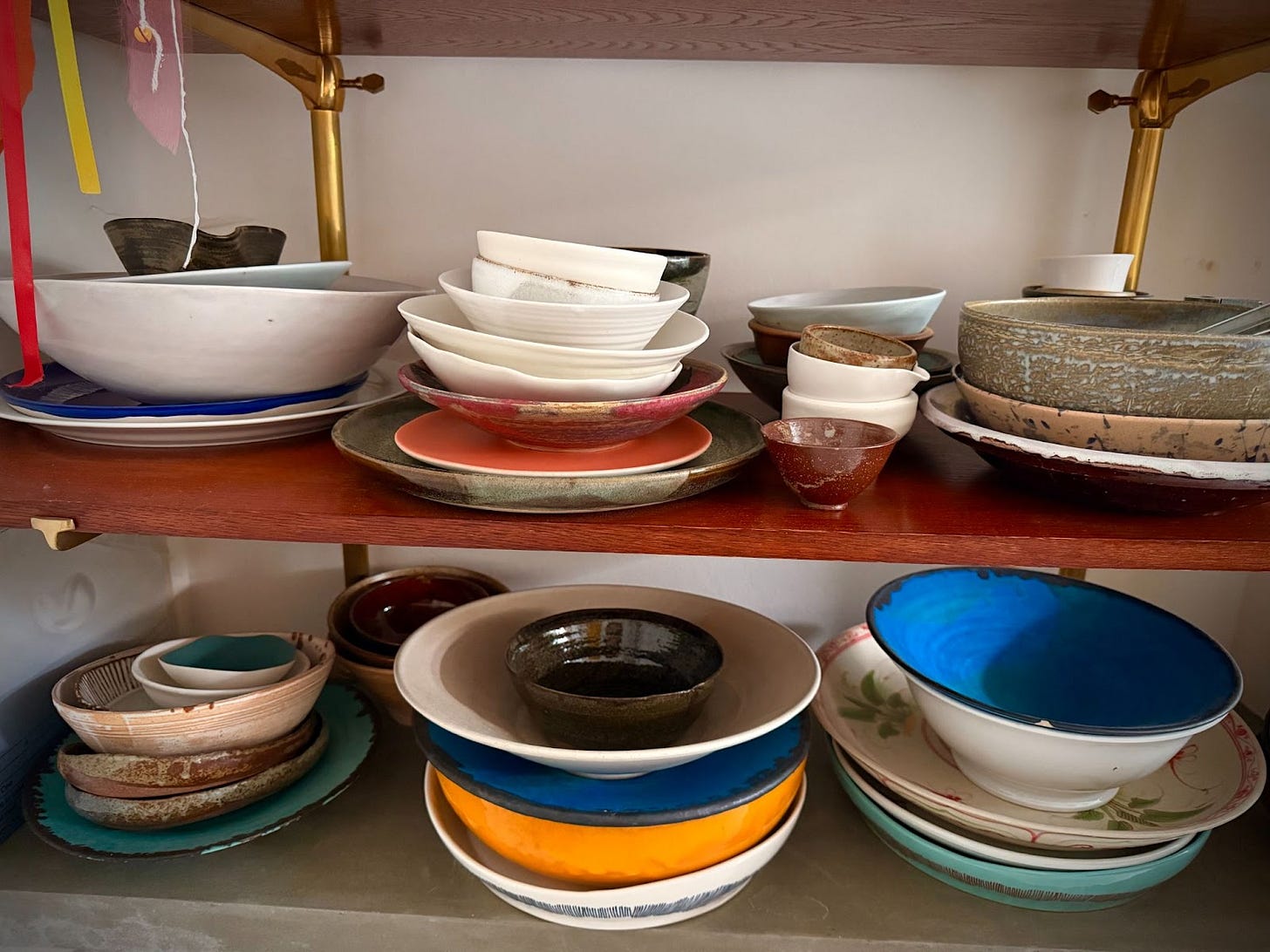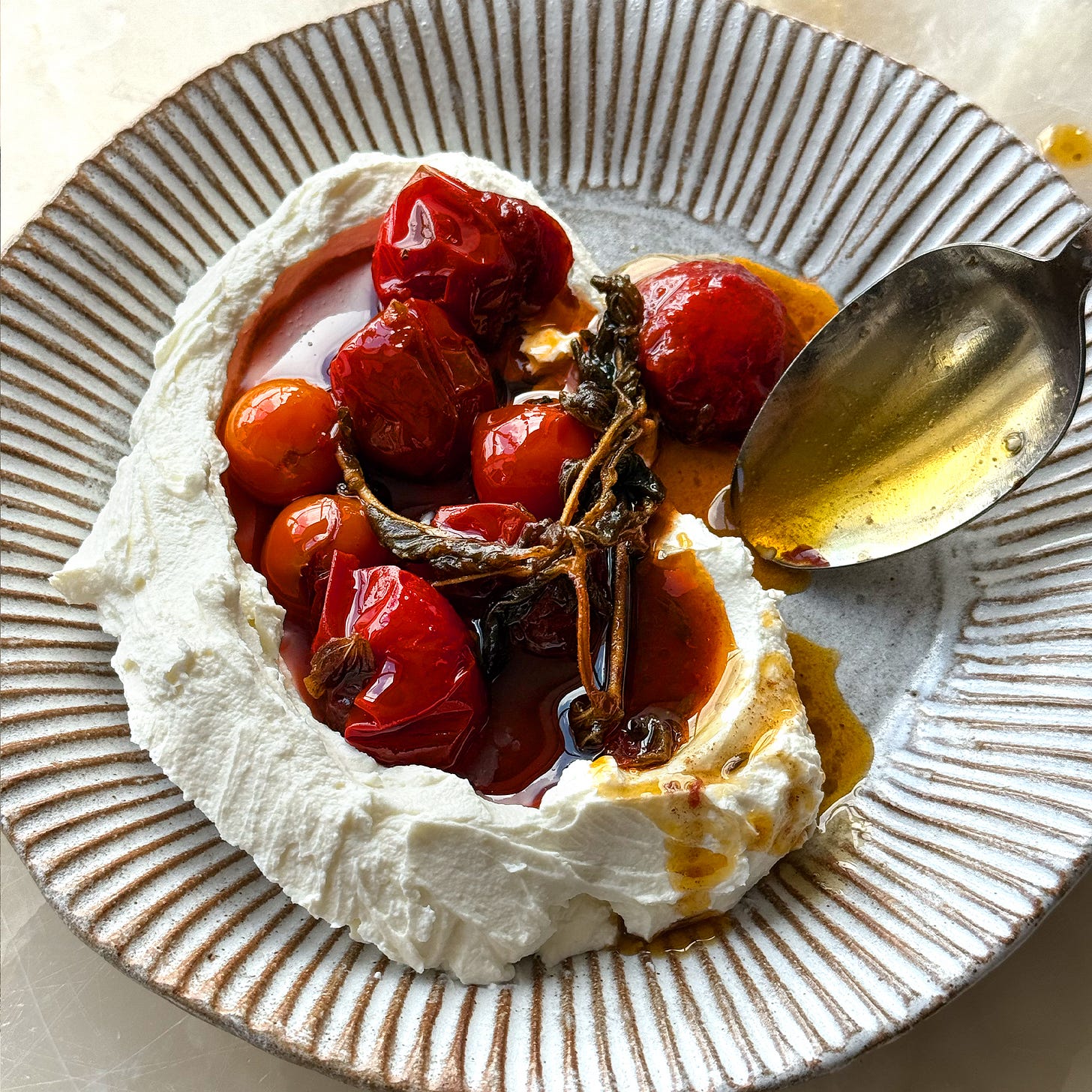What makes an Ottolenghi salad? Part 3
How to make your salads look delicious (+ two dips for your summer spread)
It’s a bit of a joke, and also a little bit true too, but I often say that I am so obsessed with my serving platters that before I decide on what to cook, I first select the platters I want to serve it on.
This is obviously not the way it always goes, but I do have a particular love affair with serving bowls, plates and platters. I find that they can make a big impact on the visual experience, which then makes the food taste even better!
The selection I have at home is eclectic; it’s made of pieces I brought back from my travels, some I don’t remember where I got and a few I’ve even made myself. They come in all shapes and sizes but, on the whole, they aren’t massive.
At our delis, we mostly have very-extra-large platters, with a wide rim and lots of space inside (it's important to leave some negative space around the edges - it makes everything look more striking). They give a sense of plenty and abundance. They invite you to jump in, or join in; to take a big spoon and scoop out a generous portion (although you do need to ask someone to do this for you!!).
The salads served on these platters are generous not just in quantity, but in spirit.
Over the past two weeks, we've spoken about choosing your hero ingredient and building contrasts and layers. Today, I want to talk about the final piece: how to make it all look as good as it tastes. That starts with the plate, but more so, it's about the final flourishes - the way we finish salads on our deli counter and how you can bring that same approach to plating in your own kitchen.
The splatter spoon
The top Ottolenghi plating secret: the splatter spoon.
Our aubergine salad is where we started using this technique, but you can use it for anything with a yoghurty, creamy element, really. It creates texture and movement on the plate - so much more interesting than a smooth, uniform spread.
Using a perforated spoon - one of those large metal serving spoons with holes - you hold it above your plate and gently tap it against your hand. Let gravity do the work of creating that perfect scattered effect. (You'll see exactly how it works in the video).
Making space for more
You’ll have seen this technique quite a bit, making a well in a spread or a dip, but we do so to create little valleys where oils and chopped salads and crispy chickpeas can pool. It’s more of a functional decision - adding space for extra toppings to make your dip more substantial. But it also looks very pretty too.
Building layers (a quick recap)
These techniques - the splatter spoon, making wells - are all part of the layering approach I spoke about last week. How you layer your salad determines how it eats! Start with your foundation - grains, roasted vegetables, or a thick spread that can support everything else. Add a middle layer for richness - cheese, yoghurt, tahini - but don't spread evenly. Dollop or scatter so some base shows through. Finally, your top notes: herbs, nuts, a drizzle of oil. The key is making sure no two forkfuls are the same.
The two recipes I'm sharing today are both very simple preparations - slow-cooked tomatoes, butter bean mash - but the way you serve them makes them the star of a summer spread.
Labneh with confit tomatoes
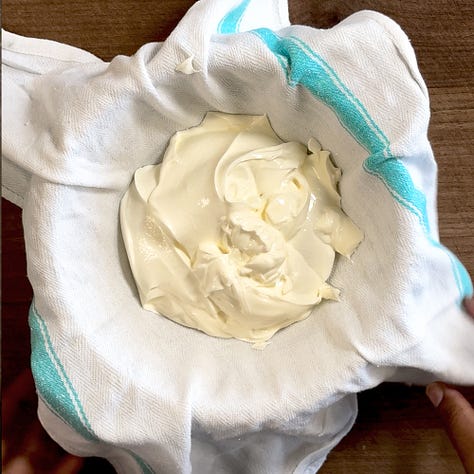
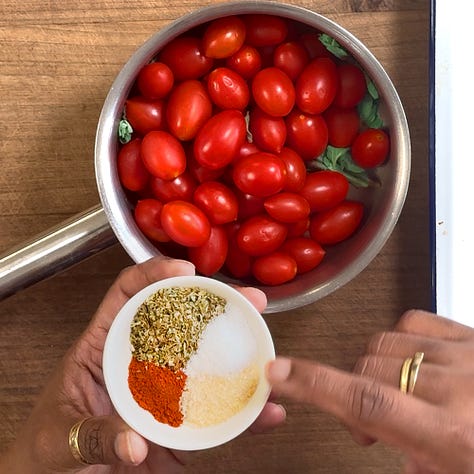
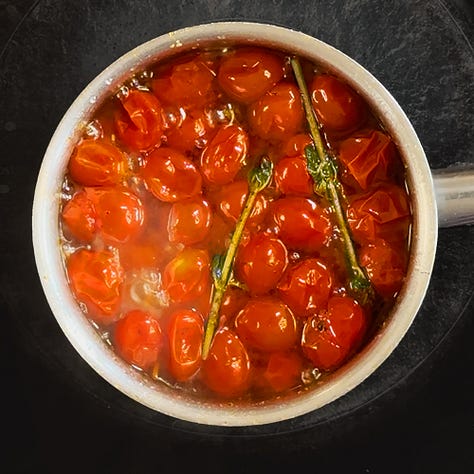
To make labneh at home, place a tea towel in a sieve set over a bowl, spoon in the yoghurt, and leave overnight. Once you've spread it across your chosen plate (something plain and flat works best), make a well in the centre and pool the confit tomatoes right in that well, letting some of the oil spill over the edges.
The tomatoes cook low and slow with balsamic vinegar until they're jammy and concentrated. A sprinkle of Urfa chilli on top adds that smoky sweetness.
If you want to make a quick pasta sauce, make double the confit tomatoes, blitz half with their juices, and store in a sterilised jar in the fridge.


